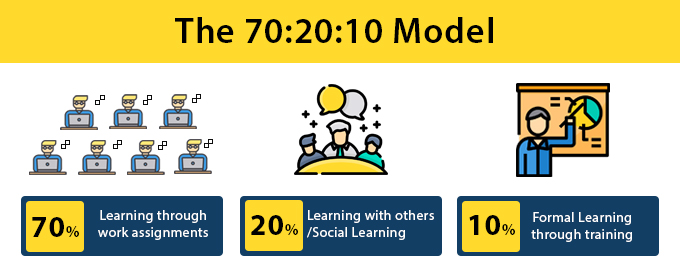Opportunities for training over the past 16 months have disappeared or moved online, but frontline staff still need ongoing coaching and performance support. On-the-job training has always been an important type of critical in the sector. In this short article, I explore why it is necessary for frontline staff to continuously learn “on the job” and provide practical ideas for making it happen.
In March 2020, at the start of the pandemic, most in person training came to an abrupt stop. Some in person events have returned, however, the majority of training has moved online. While online training has its benefits - lower costs and less time away from work - many frontline staff have not been able to take advantage of virtual learning. Frontline staff have reported working additional hours to support clients, which leaves them with no time for training and professional development. Others do not have the necessary resources or technology to access online training opportunities.

Image Source: https://storyset.com/work
The Value of Learning on the Job
Formal training, whether on-site or online, requires staff to be away from work,so it has to be scheduled with care. Even if training is free, there are costs for backfill staff to cover shifts. If training is designed for a broad audience, there can be tensions between what is learned in training and how work actually happens. Learning on the job is both a necessary and practical way to ensure that staff have the knowledge and skills they need to perform their roles effectively.
According to the 70:20:10 model of work, most learning happens through direct job-related experiences. In the 70:20:10 model, the numbers reflect the approximate distribution of three types of activities that support performance improvement: on the job experiences (70%), informal learning through team interactions (20%) and formal training (10%). In other words, we learn how to do the work by doing the work.

Image Source: https://elearningimages.adobe.com
Often in formal training sessions, there is a lot of time spent “setting the stage.” During this preliminary step, participants see how new information and skills align with job-specific tasks. It is important to understand why you would do something, not just how to do it. There is not a lot of time devoted to skill development and practice during formal training. The expectation is that practice happens on the job and staff will hone their skills over time through continuous learning, feedback and reflection.
Ideas to Boost On-the-Job Training
Look for opportunities to apply new skills and knowledge on-the-job. Come up with a project for this purpose or find ways to incorporate new learnings into existing duties.
Make time for regular supervision. Supervisors can support frontline staff to identify specific areas of strength and recognize areas for improvement. Research shows that self-reflection helps people to learn and retain new information more effectively.
Have dedicated time to share tips and challenges. Team meetings are natural opportunities for learning. Let staff take turns posing questions to the group or seeking input on a specific challenge.
Give timely feedback. Feedback from a supervisor or experienced coworker is most helpful when it is targeted and delivered immediately (for novice learners) after completing a task. More experienced learners benefit from delayed feedback giving them time to do their own self-reflection.
Be intentional with regard to formal training opportunities. Before attending training, consider how the training will impact the day-to-day work. As a follow-up, identify a few key actions you can implement right away. If co-workers are taking training together, use the buddy system for greater accountability.
The Homelessness Learning Hub has job-specific learning resources
The Homelessness Learning Hub (HLHub) has hundreds of resources to support your professional development, including online training on the topics you care most about. Our online trainings are free and self-paced which helps you fit them into your busy schedule to meet your learning goals.
Teams can use the online training for a blended learning approach. Individuals work through lessons on their own. Then, the group comes together to discuss issues or work through activities. To take it a step further, try creating your own case examples to work through as a group.
Small groups of staff within an organization can work through trainings together. Peers in the same or different organization can form informal discussion groups. Decide on a timeframe and schedule times to meet weekly or bi-weekly. You canse a group messaging tool like Slack or shared documents to collect comments and suggestions from the group. When the training is done, you have a ready reference at your fingertips.
There are many ways that HLHub trainings can support ongoing learning and professional development.
Are you using HLHub trainings and resources to learn on the job? Let us know how! Email Karen!

